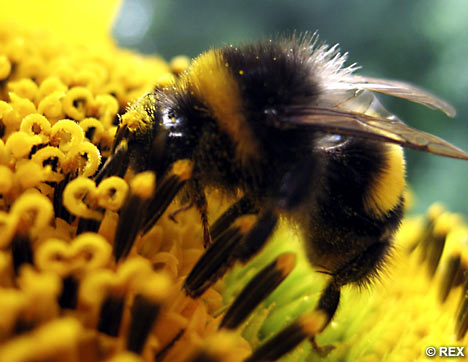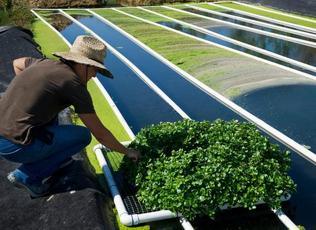Breeding Crops for Drought Tolerance Tricky
By Ching Lee; Ag Alert
With water becoming ever-more precious, farmers are increasingly looking to innovations to help their crops be more resilient in the face of drought.
One focus has been on breeding and engineering new crop varieties that can withstand longer periods of water deprivation. While much progress has been made in this area, researchers say increasing drought tolerance in crops has never been clear cut, and prospects for getting those traits into specialty crops are uncertain.
In recent years, three major seed companies have introduced corn varieties that specifically target water-limiting conditions. Hybrids from DuPont Pioneer and Syngenta became commercially available on a limited basis in 2011, while Monsanto rolled out its first transgenic drought-tolerant corn in several Western Corn Belt states last year.
Kent Bradford, professor of plant science and director of the Seed Biotechnology Center at the University of California, Davis, said there has been a lot of interest in developing drought-tolerant varieties of field crops such as corn, wheat and alfalfa, but breeding drought tolerance into higher-value crops such as vegetables, fruits and nuts may be a longer-term goal.
One issue with developing crops that can withstand extreme weather conditions is that the process is not so straightforward and can involve a number of different genes and approaches.
“Drought tolerance is not an easy trait,” Bradford said. “It’s not like disease resistance where you have a disease, you have the resistance and you’re good.”
Daniel Gallie, a biochemist at UC Riverside, whose team did some of the initial work on DuPont Pioneer’s drought-tolerant corn hybrids, said one way to increase drought tolerance in plants is to grow bigger roots that can reach deeper into the soil to get water.
The method UC researchers used in developing DuPont Pioneer’s corn involved reducing the plant’s production of ethylene, which is triggered by drought stress.
Scientists have also looked at ways to help plants retain more water, such as by closing the stomata, or pores, earlier, so that there’s less transpiration. UC researchers found that by reducing a plant’s vitamin C, which controls the opening and closing of pores in the leaves, they can help plants better conserve water.
Since all plants have pores, Gallie noted, this approach could be applied to any crop species and has been particularly important to crops grown in California, where farmers rely largely on irrigation, he added.
But whether this and other techniques will find their way into commercial crop varieties depends on whether they get picked up by the various seed companies, he said. Because academic researchers typically are not in the business of commercializing their developments, they look to industry partners with the funding and infrastructure to introduce, test and market new crop varieties, Gallie added.
With a crop like almonds, for example, because the life cycle of the tree is so long, research would be much slower than what can be done with an annual crop. Also, specialty crops, while important to California, are not considered major crops with as much devoted acreage as key commodity crops.
“It’s the size of the market,” said Doug Parker, director of the California Institute for Water Resources at the University of California. “Companies are looking at: Am I going to be able to produce enough of this to make money. And it’s not just what’s being grown in other states that they’re looking at; it’s worldwide.”
For crops that are grown in California, the focus has been less on drought tolerance and more on water use efficiency, as growers are trying to get the most yield from what limited water they have, he said.
Farmers seldom plant specialty crops without some irrigation, Bradford said, whereas the major field crops—particularly those farmed in the Midwest—are often dependent on rainfall, so being drought tolerant is more critical.
Bradford cautioned that while researchers are making headway, they still face hurdles trying to create drought-tolerant crops that would work well under different weather scenarios and field conditions.
Soils can vary in one field, he noted, so the stress may not be uniform. And not all droughts occur the same way. Some are characterized by lack of precipitation, others extreme heat or both. These events may also happen during different periods of a growing season.
Since crop development is a long-term strategy to help farmers deal with drought, Parker said short-term strategies for how they manage water in their cropping systems may prove more important than drought-tolerant crops.
But ultimately, a mix of both is needed, he said.


















